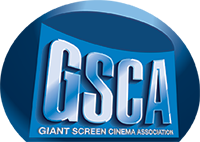By the time the stereo depth grade starts, all VFX shots, shot extensions, etc., should be finished. Scheduling and pacing of the online will become very complicated and arduous if this is not the case! A few pointers for the depth grade.
The volume of 3D is effectively baked in at time of shooting. Original volume can be changed, but making significant changes will essentially require a 2D-to-3D conversion. In effect, the depth grade is all about finessing what has already been created. The key decisions to be made are:
How much 3D is in theater space and how much is in screen space
Care needs to be taken with the spread of the baked-in volume in front of or behind the screen plane. Positive parallax (behind the screen) needs to be comfortable. Beyond about 10 inches (25 centimeters) of positive parallax on an 80-foot (24-meter) screen (1% of screen width) the stereo images can become hard to fuse into a single image. Only short bursts of positive parallax beyond 10 inches (25 centimeters), up to one degree of divergence (eyes rotating outwards) per eye, are acceptable before “walleye” sets in, causing discomfort or headaches for some audience members.
Balancing the 3D across cuts
If the points of interest before and after a cut are on significantly different parts of the Z-axis (i.e., front to back, as opposed to side to side for X and up and down for Y), audiences' eyeballs are asked to snap suddenly from one position to another; the result can range from tiring to painful.
If possible, horizontal image translation (the left-right movement of the left- and right-eye images in post to change the point of convergence) should be used to bring the point of interest of the incoming shot closer on the Z-axis to the point of interest of the outgoing shot. This will smooth the transition before moving the 3D of the incoming shot to the desired final position. This is called a handover.
Versioning 3D for different screens sizes
All 3D is a matter of taste, but it is accepted practice to reversion the 3D of a GS film for smaller screens and/or TV. A positive parallax of 0.5% to 1% will work on an 80-foot (24-meter) screen, but the TV version will need 1.5 to 2% of positive parallax. Work out what you like, since the rules are flexible here. The golden rule is not to use excessive positive parallax on the big screen, as that asks the eyes to bend outwards more than they can cope with, and will induce headaches if overdone.
Smaller digital screens work best with the 3D spread in front of and behind the screen. Ideally, a different depth grade would be done for smaller digital screens, particularly if the GS version put all of the 3D in the theater. The same smaller digital screen depth grade can be used for TV and Blu-ray.
The use of floating windows
A floating window is an opaque mask applied to the left or right side of the left or right eye, respectively, for either remedial or creative effect.
The GS experience is designed so that the edges of the screen are at the audience’s peripheral vision. In theory, edge violations (i.e., negative parallax objects being bisected by the edge of the screen) should not be noticeable. Stereographers have different opinions on whether floating windows work on the giant screen. Do some tests to see what you like.
For smaller screens, such floating windows are essential and you should consult with your stereo supervisor about their use both remedially and creatively. These are some reasons to use them:
Dynamically floating windows are used creatively to enhance or change the depth of a shot.
A dynamic floating window can create a virtual screen in front of the real screen, which will make an object with negative parallax appear behind the screen. When the window is removed, the object will appear to come forward.
A dynamic floating window can also create a virtual screen behind the real screen, to make an object with positive parallax appear in front of the screen. When the window is removed, the object will appear to move backwards.
The animated films of DreamWorks often feature creative use of floating windows; viewing them on Blu-ray will reap rewards!
General points
Ideally, a 3D project will have a stereo supervisor from beginning to end. This person works with the director and heads of departments to design the overall 3D look of the film. The stereo supervisor is then responsible for recommending suitable stereographers for the production. In some cases, the stereo supervisor also serves as the stereographer.
A production can be spread over many shoots and many stereographers may be hired for different shoots. The stereo supervisor needs to make sure all stereographers understand and follow the 3D rules and aesthetics established for the film.
It is very hard to change the volume of 3D in a native 3D shot without performing a full 2D-to-3D conversion on that shot.
The cost of 4K 2D-to-3D conversion good enough to work on the giant screen is quite variable, but it is still relatively expensive, so it is best to get the 3D volume right at time of shooting. Conversion shots can have as much or as little 3D as desired, depending on budget. However, the amount of 3D in the converted shots will need to fit into the overall feel of the rest of the native 3D material.
2D-to-3D conversion is improving all the time, but some types of shots and subjects are more suitable for conversion than others. If you don’t carefully plan how to capture and convert the material in advance, you risk ending up with less-than-satisfactory results.
 Back to 25. Insert Frame Extensions
Back to 25. Insert Frame Extensions

